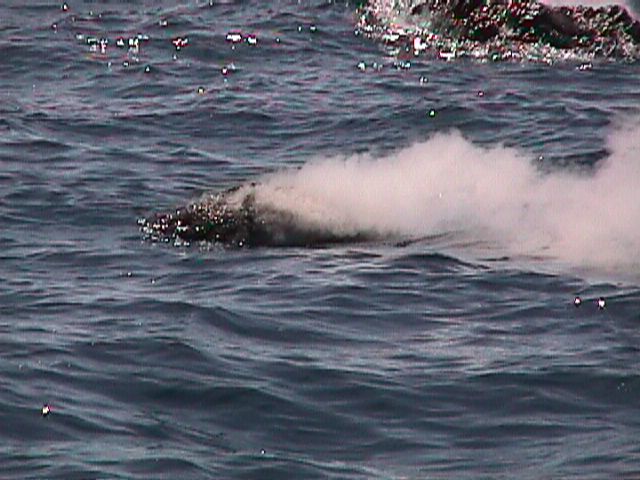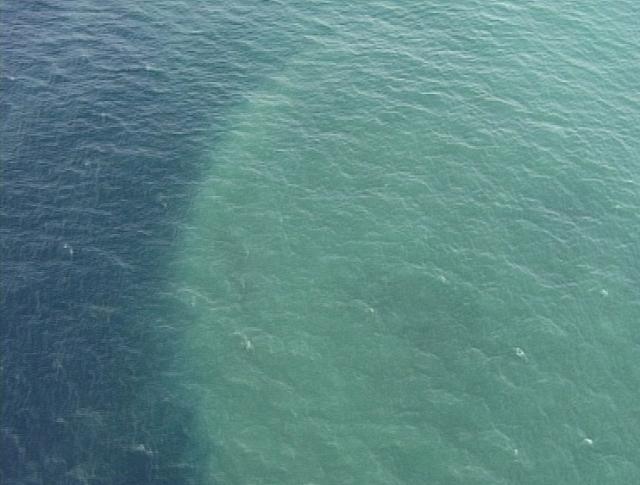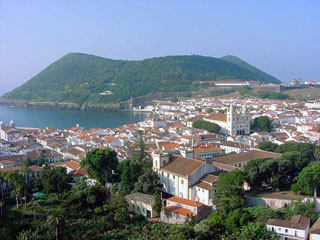Report on Terceira (Portugal) — February 2000
Bulletin of the Global Volcanism Network, vol. 25, no. 2 (February 2000)
Managing Editor: Richard Wunderman.
Terceira (Portugal) Activity in 1999; submarine eruption plume during January-February 2000
Please cite this report as:
Global Volcanism Program, 2000. Report on Terceira (Portugal) (Wunderman, R., ed.). Bulletin of the Global Volcanism Network, 25:2. Smithsonian Institution. https://doi.org/10.5479/si.GVP.BGVN200002-382050
Terceira
Portugal
38.73°N, 27.32°W; summit elev. 1023 m
All times are local (unless otherwise noted)
The submarine eruption that started on December 1998 (BGVN 24:01 and 24:03) from multiple vents along the Serreta Volcanic Ridge, about 10 km W of Terceira Island, Azores, continued through March 2000. Vents along the ridge were very active between December 1998 and September 1999. Activity then declined to very low levels with rare surface manifestations through December 1999. Activity increased again in late January 2000.
Several times during 1999 basaltic lava balloons were observed floating in the eruptive area. These "balloons" are very hot, gas-rich, lava fragments produced from small submarine lava lakes/fountains. During ascent to the surface, magmatic gas exsolves from the hot fragments, increasing the volume of the balloon while the crust is glassy and expansible. Once at the surface, interaction between the hot blocks and seawater produce white steam columns that can be seen from land when meteorological conditions are favorable (figure 5). The blocks eventually sink after the gas escapes.
 |
Figure 5. Lava balloon from the Serreta Ridge off Terciera floating on the sea surface and producing white steam column. Courtesy of CVUA. |
An oceanographic mission supported by the national Foundation for Science and Technology was carried out in April 1999 to study the geological/geophysical characteristics of the eruption and its impact on local ecosystems. Scientists from the University of Azores, University of Lisbon, University of Algarve, Instituto do Mar, and Instituito Hidrográfico used a remotely operated vehicle that crossed an impressive submarine volcanic plume just above an active eruptive center at about 380 m depth. This plume was formed by volcanic particles of ash and lapilli size along with gas bubbles and lava balloons up to 2 m in diameter.
On 28 January 2000 a yellowish spot was observed at the sea surface above the eruptive area due to the dispersion of a volcanic plume that rose from a new vent located at about 250 m depth (figure 6). The area of water discoloration caused by the plume was visible almost continuously for about a month, reaching a maximum diameter of 8 km on 24 February. The plume was generated by multiple eruptive pulses from different eruptive centers located within a few hundred meters of each other.
 |
Figure 6. Aerial view of the edge of a submarine volcanic ash plume spreading at the sea surface. Courtesy of CVUA. |
Seismicity along the ridge related to the eruption continued through the end of March, but at low levels. Since the beginning of this volcanic crisis the physical and chemical parameters of waters and fumarolic gases from Terceira Island have been monitored, with no changes detected. Another submarine eruption took place in this general location in June 1867. At that time five months of strong seismicity destroyed about 200 houses at Serreta.
Geological Summary. Terceira Island contains multiple stratovolcanoes constructed along a prominent ESE-WNW fissure zone that cuts across the island. Historically active Santa Barbara volcano at the western end of the island is truncated by two calderas, the youngest of which formed about 15,000 years ago. Comenditic lava domes fill and surround the caldera. Pico Alto lies north of the fissure zone in the north-central part of the island and contains a Pleistocene caldera largely filled by lava domes and lava flows. Guilherme Moniz caldera lies along the fissure zone immediately to the south, and 7-km-wide Cinquio Picos caldera is at the SE end of the island. Historical eruptions have occurred from Pico Alto, the fissure zone between Pico Alto and Santa Barbara, and from submarine vents west of Santa Barbara. Most Holocene eruptions have produced basaltic-to-rhyolitic lava flows from the fissure zone.
Information Contacts: J.L. Gaspar, G. Queiroz, J.M. Pacheco, T. Ferreira, R. Coutinho, M.H. Almeida, and N. Wallenstein, Centre of Volcanology of the Azores University (CVUA), Departamento de Geociencias, Rua da Mae de Deus, 9502 Ponta Delgada, Azores, Portugal (URL: http://www.uac.pt/).

